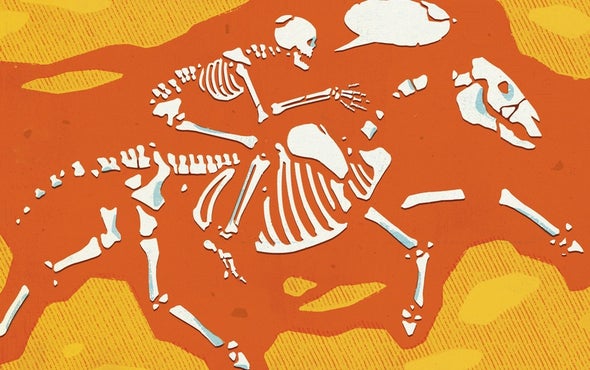New Evidence Fuels Debate over the Origin of Modern Languages
Nomadic horse riders likely opened a “steppe bridge” between Europe and Asia, but recent genetic data raise more questions

Five thousand years ago nomadic horseback riders from the Ukrainian steppe charged through Europe and parts of Asia. They brought with them a language that is the root of many of those spoken today—including English, Spanish, Hindi, Russian and Persian. That is the most widely accepted explanation for the origin of this ancient tongue, termed Proto-Indo-European (PIE). Recent genetic findings confirm this hypothesis but also raise questions about how the prehistoric language evolved and spread.
No written record of PIE exists, but linguists believe they have largely reconstructed it. Some words, including “water” (wód), “father” (pH2-ter) and “mother” (meH2-ter), are still used today. Archaeologist Marija Gimbutas first proposed the Ukrainian origin, known as the kurgan hypothesis, in the 1950s. Gimbutas traced the language back to the Yamnaya people, herders from the southern grasslands of modern-day Ukraine who domesticated the horse.
In 2015 a series of studies sequenced the DNA of human bones and other remains from many parts of Europe and Asia. The data suggest that around 3500 B.C.—roughly the same time that many linguists place the origin of PIE and that archaeologists date horse domestication—Yamnaya genes replaced about 75 percent of the existing human gene pool in Europe. Together with the archaeological and linguistic evidence, the genetic data tipped the scales heavily in favor of the kurgan hypothesis.
No comments:
Post a Comment